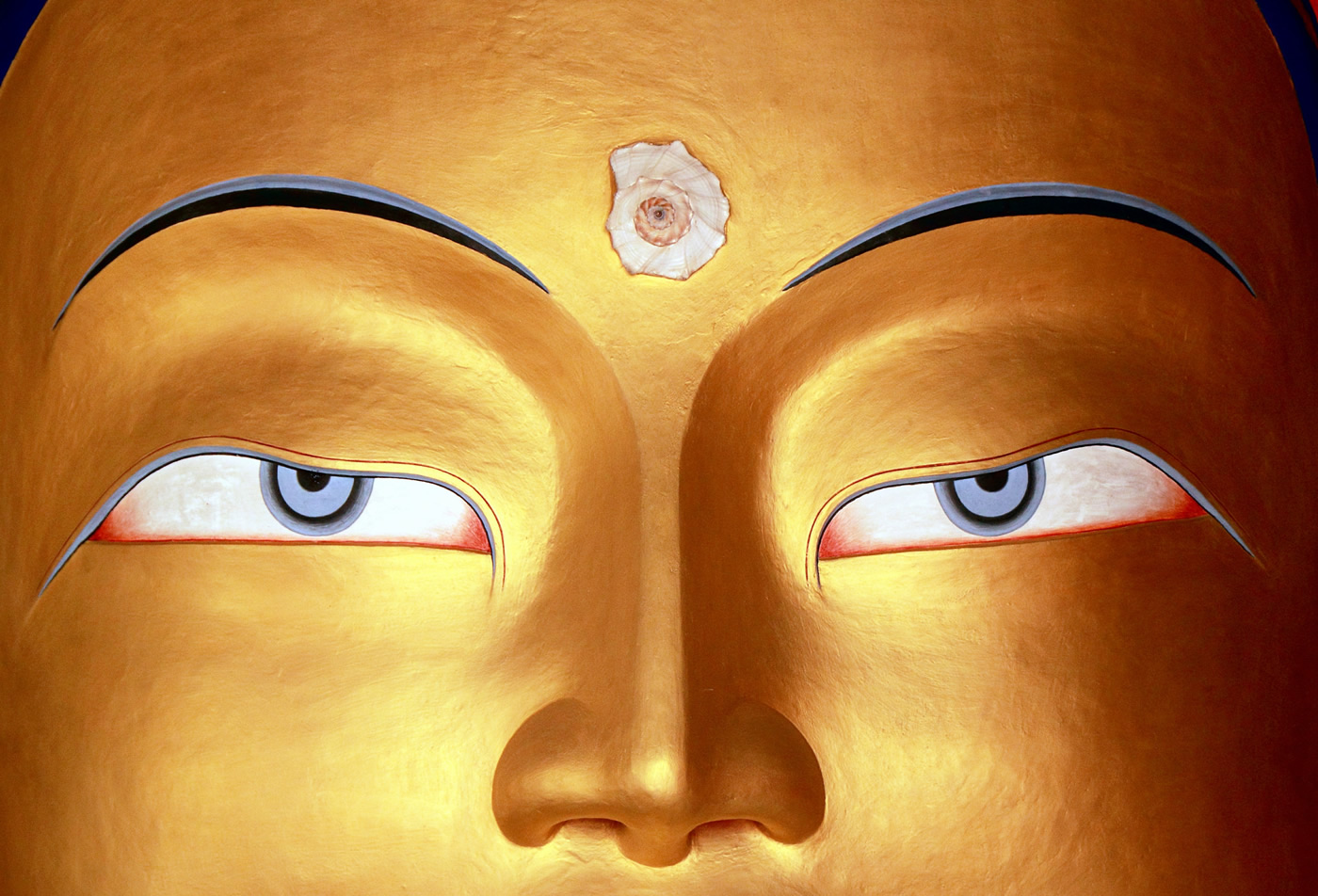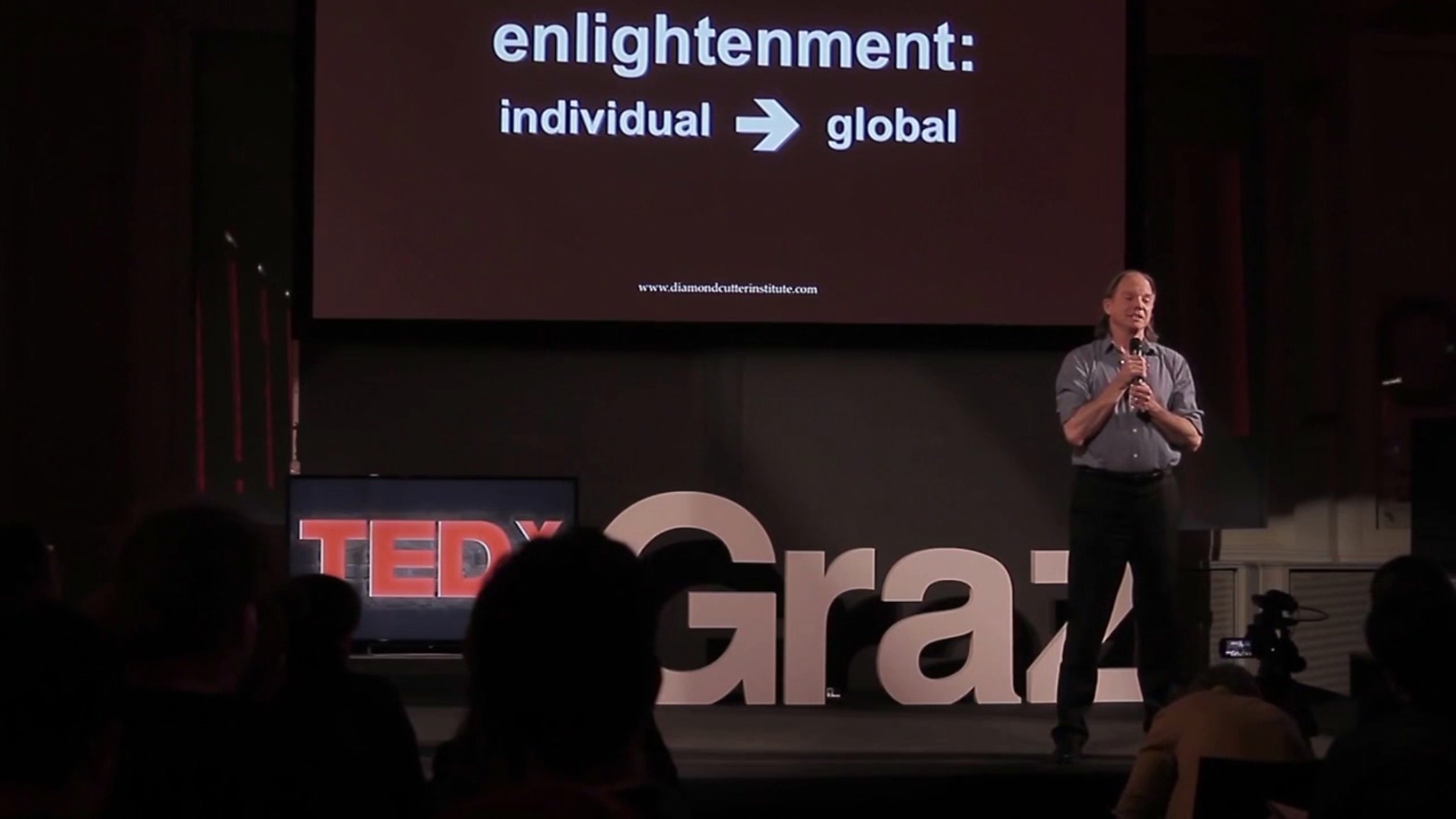這是格西麥克根據蓮花戒大師關於《金剛經》的論釋而教授的四部分系列中的第二部分。這次靜修營提供了獨特的機會,讓大家可以深度鑽研關於空性冥想的罕見教授。靜修營包含了由早上格西麥克授課環節,接著學生回到各自的閉關房中進行個人習練。
格西麥克節選了描述證悟者天堂身(報身)的跡象與標記(三十二相,八十種好)的原經文,源自於彌勒尊者所說的《證悟華飾論》(《現觀莊嚴論》),由聖無著在公元350年書寫記錄。以及選自東藏貢唐偉大的昆秋·丹貝·郡鎂的一次教授筆記,解釋了佛陀的相好與業力的關聯。
冥想圖片
佛陀的跡象與標記
音頻
在印度有兩本著名的《金剛經》梵文論釋。格西麥克選用了蓮花介大師對於《金剛經》的論釋,作為本次教學的依據。這本論釋著於公元750年間。另外一本著名的印度論釋是由世親大師在約公元350年所著。
關於這兩本留存的梵文論釋,格西麥克說道:
“現存有兩本——其一是公元750年間蓮花戒大師所著,另一本則由在此之前約400年的世親大師所著。蓮花戒大師把正確的冥想方法傳授給藏王赤松德贊,因而名聲大作。”
“蓮花戒大師的論釋是一本內涵深重的著作,他引用經文,以闡明佛學五大哲學派別之一所提出的某些極難點。”
蓮花戒大師是8世紀赫赫有名的印度學者,以及是當時那爛陀大學的住持,曾被迎請至藏地傳講佛法。其最為著名的經典著作是關於冥想的《禪定修習次第》(梵文名為Bhavanakrama, 藏文名為Gompay Rimpa)。我們的眾多讀者之所以得知蓮花戒大師,是因為他這本著作打造了,亞洲經典學院的第 三套關於冥想的課程中,大部分內容的教理基礎。
这是格西麦克根据莲花戒大师关于《金刚经》的论释而教授的四部分系列中的第二部分。这次静修营提供了独特的机会,让大家可以深度钻研关于空性冥想的罕见教授。静修营包含了由早上格西麦克授课环节,接着学生回到各自的闭关房中进行个人习练。
格西麦克节选了描述证悟者天堂身(报身)的迹象与标记(三十二相,八十种好)的原经文,源自于弥勒尊者所说的《证悟华饰论》(《现观庄严论》),由圣无着在公元350年书写记录。以及选自东藏贡唐伟大的昆秋·丹贝·郡镁的一次教授笔记,解释了佛陀的相好与业力的关联。
冥想图片
佛陀的迹象与标记
音频
在印度有两本著名的《金刚经》梵文论释。格西麦克选用了莲花介大师对于《金刚经》的论释,作为本次教学的依据。这本论释著于公元750年间。另外一本著名的印度论释是由世亲大师在约公元350年所著。
关于这两本留存的梵文论释,格西麦克说道:
“现存有两本——其一是公元750年间莲花戒大师所著,另一本则由在此之前约400年的世亲大师所著。莲花戒大师把正确的冥想方法传授给藏王赤松德赞,因而名声大作。”
“莲花戒大师的论释是一本内涵深重的著作,他引用经文,以阐明佛学五大哲学派别之一所提出的某些极难点。”
莲花戒大师是8世纪赫赫有名的印度学者,以及是当时那烂陀大学的住持,曾被迎请至藏地传讲佛法。其最为著名的经典著作是关于冥想的《禅定修习次第》(梵文名为Bhavanakrama, 藏文名为Gompay Rimpa)。我们的众多读者之所以得知莲花戒大师,是因为他这本著作打造了,亚洲经典学院的第 三套关于冥想的课程中,大部分内容的教理基础。
This is the second in a four-part series based on Master Kamalashila’s commentary on the Diamond Cutter Sutra led by Geshe Michael Roach. This retreat provided a unique opportunity to delve deeply into rarely taught meditations on emptiness. The retreat consisted of morning sessions led by Geshe Michael Roach followed by individual practice in the student’s private retreat cabin.
Geshe Michael included a section from The Jewel of Realization, spoken by Lord Maitreya and written down by Arya Asanga describing the Buddha’s Marks and Signs, as well as a selection from A lamp Which Illuminates the Hidden Meaning composed of notes to a teaching by the great Konchok Tenpay Drunme of Gungtang, which explains the karmic correlations of the Buddha’s Marks and Signs.
Lecture Videos
This is a video playlist. Just click for the next video to see additional videos in the series.
Meditation Images
Meditations of Kamalashila on The Diamond Cutter Sutra
The Marks and Signs of a Buddha Translation
Audio
There are two famous commentaries to The Diamond Cutter Sutra that were written in Sanskrit in India. The commentary to the Diamond Cutter Sutra that Geshe Michael is using for the basis of this teaching is by Master Kamalashila. It was written around 750 A.D., the other famous Indian commentary was done by by Master Vasubandhu around 350 A.D.
Here’s what Geshe Michael had to say about the two surviving Sanskrit commentaries:
“We have two left — one by Kamalashila, who lived around 750 C.E., and the other by Vasubandhu, who lived some four hundred years before. Kamalashila’s claim to fame was that he taught King Trisong Detsun of Tibet how to meditate properly.”
“Kamalashila’s commentary is an intense treatise that uses the Sutra to explain some very difficult positions held by one of the five philosophical schools of Buddhism.”
Master Kamalashila was the renowned 8th century Indian scholar and abbot of Nalanda University who was invited to teach in Tibet, and is probably best known for his classic text about meditation called The Steps of Meditation (Bhavanakrama in Sanskrit, Gompay Rimpa in Tibetan). Many of you know Master Kamalshila because this famous text forms the basis for much of ACI Course 3 on Meditation.
- Idims: 龍樹菩薩的智慧課程6 (2024, Arizona) - 16 4 月, 2025
- 龍樹菩薩的智慧課程6:藥師佛與龍樹大師的智慧的靜修營 (2023, Arizona) - 1 4 月, 2025
- Idims: 掌中解脫 第42期: 夢想的力量: 把偉大的想法帶進生活 (2023, Kyoto) - 29 3 月, 2025













